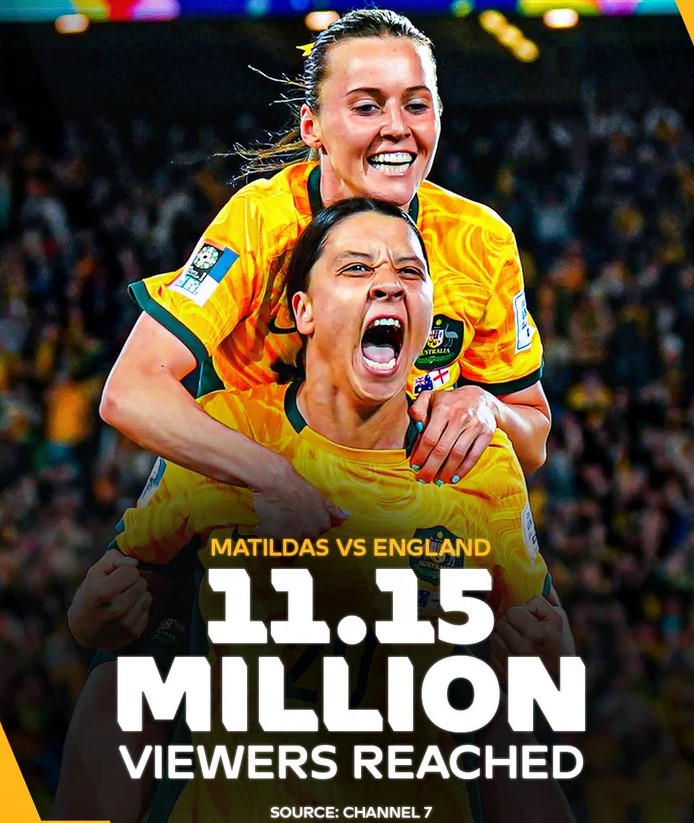It’s the women’s sporting world
0Last night, I sat at The Log Cabin, in Penrith – on the Nepean River surrounded by hundreds of fans decked out in green and gold, cheering on the Matildas in their epic semi-final encounter against England.
While the result didn’t go their way, this was just another emphatic building block of women’s sports in Australia and New Zealand.
Hosts of the FIFA Women’s World Cup, these two countries have seen a remarkable influx of women’s world sports in their backyard in the last four years.
In February 2020, Australia hosted the ICC Women’s T20 Cricket World Cup, which they went on to win and secure their fifth title in front of a full house at the MCG.
March and April of 2022 saw New Zealand host the ICC Women’s Cricket World Cup where Australia defeated England by 71 runs while claiming their seventh title.
All of Aotearoa held their breath on the night of November 12, 2022, as the hand of Joanah Ngan-Woo tipped the English line-out throw into New Zealand’s favour in the dying seconds of the final, as they won and hosted the 2021 Women’s Rugby World Cup.
We’ve seen some of the world’s best sportspeople in Australia and New Zealand here since the beginning of the decade – and the love and passion for women’s sport is only growing.
Here’s a brief history of professional sporting leagues starting in recent history.
New Zealand kicked off their first women’s T20 cricket competition in 2007/2008.
2008/2009 saw the W-League, a professional women’s football competition start.
The summer of 2015/2016 – The Women’s Big Bash League had its inaugural season.
Rugby League got its first NRLW season underway in 2018, the same year as their rugby counterparts in Australia launched Super Rugby W. This was a year after the AFLW played its first year.
Four years later, New Zealand rugby launched Super Rugby Aupiki. Earlier this year it completed its second season.
The Tauihi Basketball Aotearoa League is currently also in its second season, a mere 42 years after the WNBL started in Australia.
What’s more impressive, is that all of these sports are getting eyeballs on them. Not just in the stands, but on TV too. A remarkable advancement for children to see their heroes perform in their desired sport.
Hearing Ellie Carpenter, a current Matildas player, talk in the press conference after their breathtaking win over France in the quarter-finals, about how when she was 12 years old she went to watch the Matildas play.
She was one of 300 fans in the stand that day in 2012. That solidified in her mind to chase that dream.
Can you imagine the amount of inspired young girls and boys in the stands at Stadium Australia for that quarter-final win, where 75,784 people watched on in awe of their team winning?
In rugby, the likes of Maiakawanakaukani Roos, Hazel Tubic, Georgia Ponsonby, Chelsea and Alana Bremner are household names in New Zealand.
Tyla Nathan-Wong, Niall Guthrie, and Gayle Broughton are names both Kiwi rugby and league fans will now know, having played in both codes in the last 24 months.
Football Ferns’ players Michaela Foster, Ali Riley, Hannah Wilkinson, as well as Matildas Sam Kerr, Caitlin Foord, Mackenzie Arnold and Emily Van Egmond are names we all know because of the spotlight shined on women’s sport and the success of it.
I love to see the advancement of women’s sport. I love seeing people talking about it on social media. I love seeing people fill the stands for these events in person. I love seeing people make time to watch women’s sport on TV. I love that we’re giving children more sporting heroes to emulate in their backyards. I love that women’s sport exists and it’s only getting better and better every day.
Follow Stephen Gallagher on Twitter

